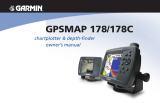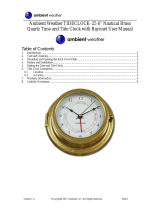
5
Introduction
Table of Contents
Introduction....................................1-7
Registration ........................................ 1
Warnings and Cautions ...................... 2
FCC Compliance Statement ............... 3
Features.............................................. 4
Table of Contents ............................... 5
“How To” Index.................................. 6
GPS 72 Unit Features ......................... 7
Section Two: Reference ................7-47
Initializing the GPS Receiver............7-8
GPS Information Page ................... 9-11
Map Page..................................... 12-17
Pointer Page .................................... 18
Highway Page..............................19-21
Main Menu Page..........................21-47
Trip Computer....................... 21-22
Tracks.................................... 23-24
Waypoints .................................. 25
Creating Waypoints ............... 26-28
Editing Waypoints ...................... 29
Points of Interest......................... 30
Cities .......................................... 30
Routes ................................... 31-34
Proximity.................................... 35
Goto Navigation .................... 36-37
Celestial................................. 38-40
MapSource Info .......................... 41
Setup Menu- General Tab ...... 42-43
Setup Menu-Time Tab ................ 43
Setup Menu-Units Tab................ 44
Setup Menu-Location Tab...... 44-45
Setup Menu-Alarms Tab ............. 46
Setup Menu-Interface Tab........... 47
Appendices.................................48-65
Appendix A: Specifi cations............... 48
Appendix B: Wiring & Interfacing.... 49
Appendix C: Time Offsets ................ 50
Appendix D: Map Datums........... 51-52
Appendix E: Navigation Terms .... 53-54
Appendix F: Messages .................55-56
Appendix G: Loran TD................ 57-58
Appendix H: Accessories .................. 59
Appendix
I: Index ...................... 60-64
Appendix
J: Warranty ..................... 65
190-00294-00_0B.indd 5 9/25/2002, 2:37:10 PM





















